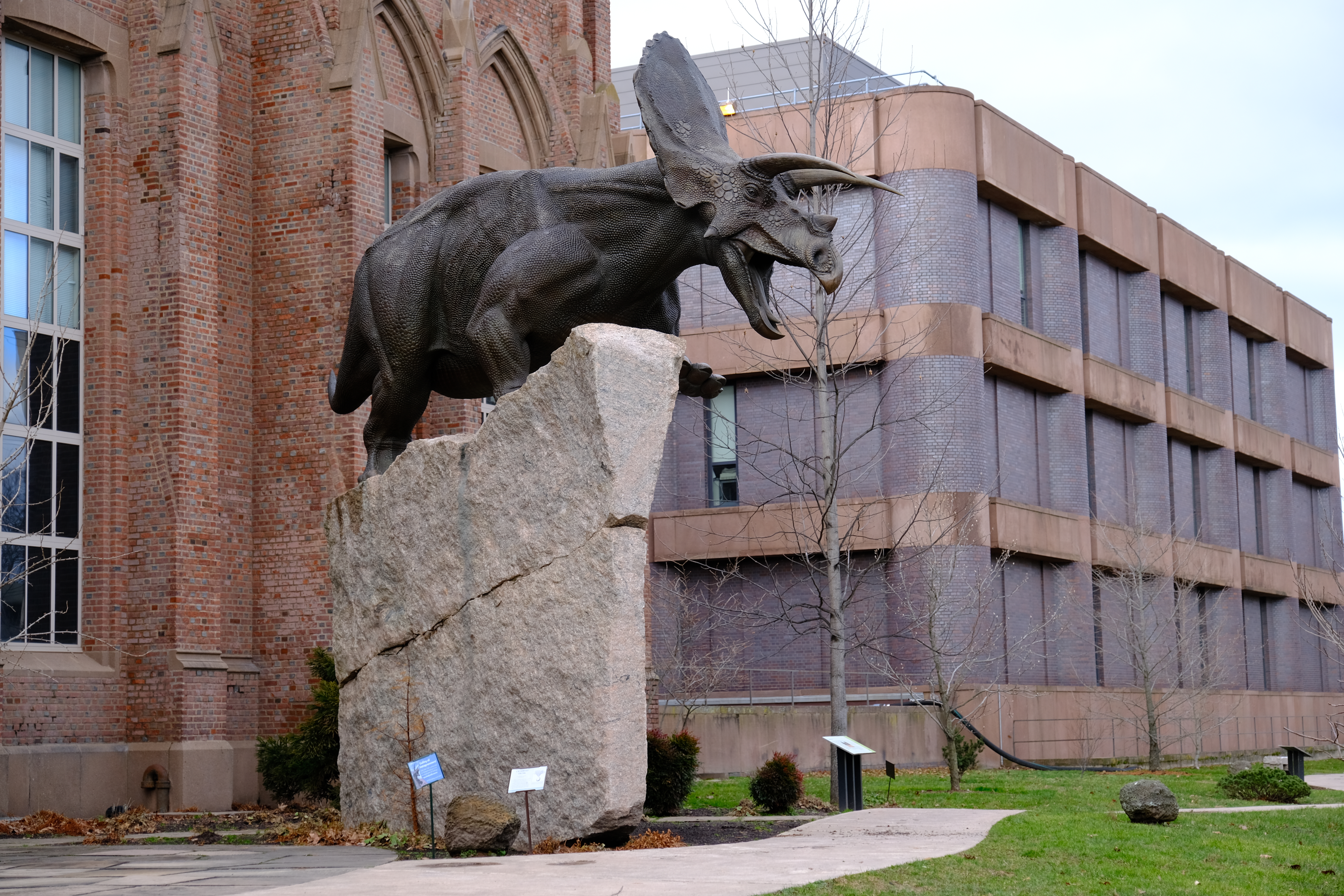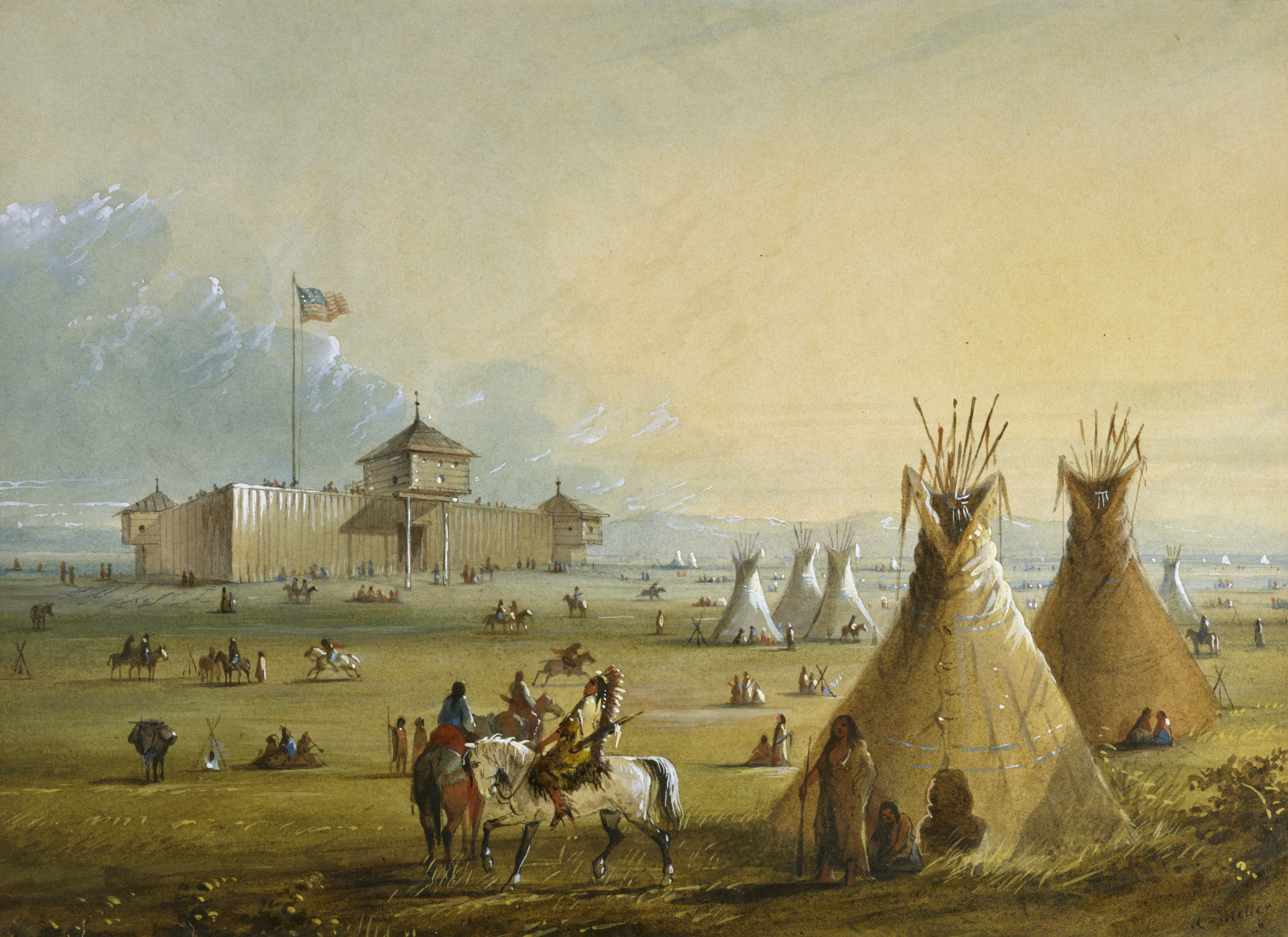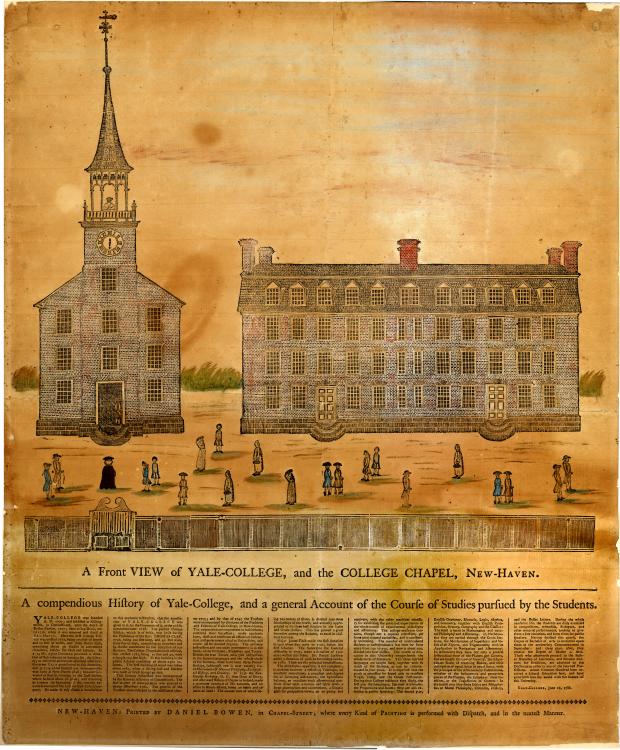|
Neoplagiaulax
''Neoplagiaulax'' is a mammal genus from the Paleocene of Europe and North America. In the case of the latter continent, there may possibly be some slightly earlier, Upper Cretaceous material too. It existed in the age immediately following the extinction of the last dinosaurs. This animal was a member of the extinct order Multituberculata, lying within the suborder Cimolodonta and family Neoplagiaulacidae. The genus ''Neoplagiaulax'' ("new '' Plagiaulax''") was named by Lemoine V. in 1882. Species *''Neoplagiaulax annae'' (Vianey-Liaud M. 1986) has been found in Paleocene strata of Cernay, France. *''?Neoplagiaulax burgessi'' (Archibald J.D. 1982) has been found in Maastrichtian (Upper Cretaceous) strata of Hell Creek, USA. *''Neoplagiaulax copei'' (Lemoine V. 1885) has been found in Paleocene strata of Cernay, France. It has been cited as a possible descendant of ''N. hazeni''. *''Neoplagiaulax donaldorum'' (Scott C.S., Krause D.W. 2006) found in early Tiffanian (late Pale ... [...More Info...] [...Related Items...] OR: [Wikipedia] [Google] [Baidu] |
Multituberculata
Multituberculata (commonly known as multituberculates, named for the multiple tubercles of their teeth) is an extinct Order (biology), order of rodent-like mammals with a fossil record spanning over 130 million years. They first appeared in the Middle Jurassic, and reached a peak diversity during the Late Cretaceous and Paleocene. They eventually declined from the mid-Paleocene onwards, disappearing from the known fossil record in the late Eocene. They are the most diverse order of Mesozoic mammals with more than 200 species known, ranging from mouse-sized to beaver-sized. These species occupied a diversity of ecological niches, ranging from burrow-dwelling to squirrel-like arborealism to jerboa-like hoppers. Multituberculates are usually placed as Crown group, crown mammals outside either of the two main groups of living mammals, Theria — placentals and marsupials — and Monotremata,Agustí-Antón 2002, pp 3-4 but usually as closer to Theria than to monotremes. They are ... [...More Info...] [...Related Items...] OR: [Wikipedia] [Google] [Baidu] |
Tiffanian
The Tiffanian North American Stage on the geologic timescale is the North American faunal stage according to the North American Land Mammal Ages chronology (NALMA), typically set from 60,200,000 to 56,800,000 years BP lasting . It is usually considered to overlap the Selandian and Thanetian within the Paleocene. The Tiffanian is preceded by the Torrejonian and followed by the Clarkforkian NALMA stages. Substages The Tiffanian is considered to contain the following substages: *Ti6: Lower boundary source of the base of the Tiffanian (approximate). *Ti5 Lower boundary source of the base of the Tiffanian (approximate) and upper boundary source of the base of the Clarkforkian (approximate). *Ti4: Lower boundary source of the base of the Tiffanian (approximate) and upper boundary source of the base of the Clarkforkian (approximate). *Ti3: Lower boundary source of the base of the Tiffanian (approximate) and upper boundary source of the base of the Clarkforkian (approximate). *Ti2: ... [...More Info...] [...Related Items...] OR: [Wikipedia] [Google] [Baidu] |
Neoplagiaulacidae
Neoplagiaulacidae is a family of mammal within the extinct order Multituberculata. Fossil remains are known from the Upper Cretaceous through to the latest Eocene/early Oligocene. Representatives have been found in North America, Europe and Asia. They are the last multituberculates known.Karew Schumaker, Multituberculates from the Medicine Pole Hills Local Fauna (Chadronian) of Bowman County, North Dakota Neoplagiaulacinae (Ameghino 1890) has been seen as a sub-family within Ptilodontidae (Cope, 1887). More recent thinking has it as a family. Synonyms are Ectypodidae (Sloan & Van Valen 1965) and Ectypodontidae (Sloan & Van Valen 1965). Most fossils are restricted to teeth. The family is part of the suborder of Cimolodonta within the superfamily of Ptilodontoidea Ptilodontoidea is a group of extinct mammals from the Northern Hemisphere. They were generally small, somewhat rodent-like creatures of the extinct order Multituberculata. Some of these genera have a great many spec ... [...More Info...] [...Related Items...] OR: [Wikipedia] [Google] [Baidu] |
Cimolodonta
Cimolodonta is a clade of Multituberculata, multituberculate mammals that lived from the Cretaceous to the Eocene. They probably lived something of a rodent-like existence until their ecological niche was assumed by true rodents. The more basal multituberculates are found in a different suborder, "Plagiaulacida", a Paraphyly, paraphyletic group containing all non cimolodontan multituberculates. Cimolodonta is apparently a natural (monophyletic) suborder. Remains have been identified from across the Northern Hemisphere. They first appeared during the Aptian extinction, Aptian, and completely replaced the more primitive plagiaulacidans by the early Late Cretaceous. The taxon is recognized as the informal Paracimexomys group and the superfamilies Djadochtatherioidea, Taeniolabidoidea, and Ptilodontoidea. Additionally, and of uncertain affinities, are the families Cimolomyidae, Boffius, Boffiidae, Eucosmodontidae, Kogaionidae, Microcosmodontidae and the two genera ''Uzbekbaatar'' and ... [...More Info...] [...Related Items...] OR: [Wikipedia] [Google] [Baidu] |
Peabody Museum Of Natural History
The Peabody Museum of Natural History at Yale University (also known as the Yale Peabody Museum of Natural History or the Yale Peabody Museum) is one of the oldest, largest, and most prolific university natural history museums in the world. It was founded by the philanthropist George Peabody in 1866 at the behest of his nephew Othniel Charles Marsh, an early paleontologist. The museum is best known for the Great Hall of Dinosaurs, which includes a mounted juvenile ''Brontosaurus'' and the mural '' The Age of Reptiles''. The museum also has permanent exhibits dedicated to human and mammal evolution; wildlife dioramas; Egyptian artifacts; local birds and minerals; and Native Americans of Connecticut. In 2020, the Peabody Museum closed for its "first comprehensive renovation in 90 years." It reopened, with more than twice the exhibition space, on March 26, 2024. Description The Peabody Museum is located at 170 Whitney Avenue in New Haven, Connecticut and is staffed by nearl ... [...More Info...] [...Related Items...] OR: [Wikipedia] [Google] [Baidu] |
Montana
Montana ( ) is a landlocked U.S. state, state in the Mountain states, Mountain West subregion of the Western United States. It is bordered by Idaho to the west, North Dakota to the east, South Dakota to the southeast, Wyoming to the south, and the Provinces and territories of Canada, Canadian provinces of Alberta, British Columbia, and Saskatchewan to the north. It is the List of U.S. states and territories by area, fourth-largest state by area, but the List of U.S. states and territories by population, eighth-least populous state and the List of U.S. states and territories by population density, third-least densely populated state. Its List of capitals in the United States, capital is Helena, Montana, Helena, while the List of municipalities in Montana, most populous city is Billings, Montana, Billings. The western half of the state contains numerous mountain ranges, while the eastern half is characterized by western prairie terrain and badlands, with smaller mountain ranges f ... [...More Info...] [...Related Items...] OR: [Wikipedia] [Google] [Baidu] |
Wyoming
Wyoming ( ) is a landlocked U.S. state, state in the Mountain states, Mountain West subregion of the Western United States, Western United States. It borders Montana to the north and northwest, South Dakota and Nebraska to the east, Idaho to the west, Utah to the southwest, and Colorado to the south. With an estimated population of 587,618 as of 2024, Wyoming is the List of U.S. states and territories by population, least populous state despite being the List of U.S. states and territories by area, 10th largest by area, and it has the List of U.S. states by population density, second-lowest population density after Alaska. The List of capitals in the United States, state capital and List of municipalities in Wyoming, most populous city is Cheyenne, Wyoming, Cheyenne, which had a population of 65,132 in 2020. Wyoming's western half consists mostly of the ranges and rangelands of the Rocky Mountains; its eastern half consists of high-elevation prairie, and is referred to as th ... [...More Info...] [...Related Items...] OR: [Wikipedia] [Google] [Baidu] |
North Dakota
North Dakota ( ) is a U.S. state in the Upper Midwest, named after the indigenous Dakota people, Dakota and Sioux peoples. It is bordered by the Canadian provinces of Saskatchewan and Manitoba to the north and by the U.S. states of Minnesota to the east, South Dakota to the south, and Montana to the west. North Dakota is part of the Great Plains region, characterized by broad prairies, steppe, temperate savanna, badlands, and farmland. North Dakota is the List of U.S. states and territories by area, 19th-largest state by area, but with a population of just under 800,000, the List of U.S. states and territories by population, fourth-least populous and List of U.S. states by population density, fourth-least densely populated. The List of capitals in the United States, state capital is Bismarck, North Dakota, Bismarck and the List of cities in North Dakota, most populous city is Fargo, North Dakota, Fargo, which accounts for nearly a fifth of the state's population; both cities ... [...More Info...] [...Related Items...] OR: [Wikipedia] [Google] [Baidu] |
Mammal
A mammal () is a vertebrate animal of the Class (biology), class Mammalia (). Mammals are characterised by the presence of milk-producing mammary glands for feeding their young, a broad neocortex region of the brain, fur or hair, and three Evolution of mammalian auditory ossicles, middle ear bones. These characteristics distinguish them from reptiles and birds, from which their ancestors Genetic divergence, diverged in the Carboniferous Period over 300 million years ago. Around 6,640 Neontology#Extant taxon, extant species of mammals have been described and divided into 27 Order (biology), orders. The study of mammals is called mammalogy. The largest orders of mammals, by number of species, are the rodents, bats, and eulipotyphlans (including hedgehogs, Mole (animal), moles and shrews). The next three are the primates (including humans, monkeys and lemurs), the Artiodactyl, even-toed ungulates (including pigs, camels, and whales), and the Carnivora (including Felidae, ... [...More Info...] [...Related Items...] OR: [Wikipedia] [Google] [Baidu] |
Yale University
Yale University is a Private university, private Ivy League research university in New Haven, Connecticut, United States. Founded in 1701, Yale is the List of Colonial Colleges, third-oldest institution of higher education in the United States, and one of the nine colonial colleges chartered before the American Revolution. Yale was established as the Collegiate School in 1701 by Congregationalism in the United States, Congregationalist clergy of the Connecticut Colony. Originally restricted to instructing ministers in theology and sacred languages, the school's curriculum expanded, incorporating humanities and sciences by the time of the American Revolution. In the 19th century, the college expanded into graduate and professional instruction, awarding the first Doctor of Philosophy, PhD in the United States in 1861 and organizing as a university in 1887. Yale's faculty and student populations grew rapidly after 1890 due to the expansion of the physical campus and its scientif ... [...More Info...] [...Related Items...] OR: [Wikipedia] [Google] [Baidu] |
Alberta
Alberta is a Provinces and territories of Canada, province in Canada. It is a part of Western Canada and is one of the three Canadian Prairies, prairie provinces. Alberta is bordered by British Columbia to its west, Saskatchewan to its east, the Northwest Territories to its north, and the U.S. state of Montana to its south. Alberta and Saskatchewan are the only two landlocked Canadian provinces. The eastern part of the province is occupied by the Great Plains, while the western part borders the Rocky Mountains. The province has a predominantly humid continental climate, continental climate, but seasonal temperatures tend to swing rapidly because it is so arid. Those swings are less pronounced in western Alberta because of its occasional Chinook winds. Alberta is the fourth largest province by area, at , and the fourth most populous, with 4,262,635 residents. Alberta's capital is Edmonton; its largest city is Calgary. The two cities are Alberta's largest Census geographic units ... [...More Info...] [...Related Items...] OR: [Wikipedia] [Google] [Baidu] |




